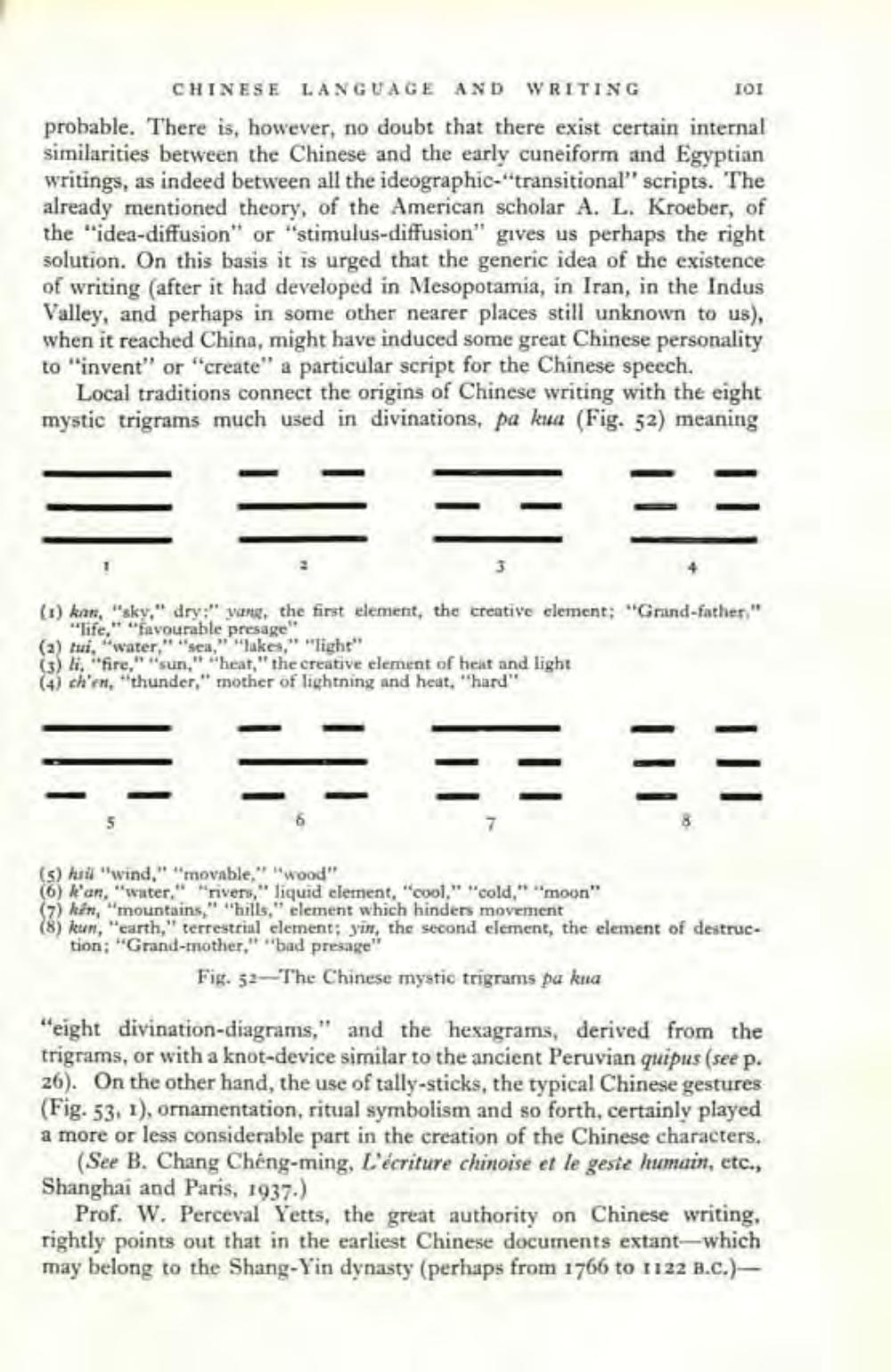________________
CHINESE LANGUAGE AND WRITING 101 probable. There is, however, no doubt that there exist certain internal similarities between the Chinese and the early cuneiform and Egyptian writings, as indeed between all the ideographic-"transitional" scripts. The already mentioned theory, of the American scholar A. L. Kroeber, of the "idea-diffusion" or "stimulus-diffusion" gives us perhaps the right solution. On this basis it is urged that the generic idea of the existence of writing (after it had developed in Mesopotamia, in Iran, in the Indus Valley, and perhaps in some other nearer places still unknown to us), when it reached China, might have induced some great Chinese personality to "invent" or "create" a particular script for the Chinese speech.
Local traditions connect the origins of Chinese writing with the eight mystic trigrams much used in divinations, pa kua (Fig. 52) meaning
(1) kan, "sky," dry:" wung, the first element, the creative element; "Grind-father"
"life," "favourable presage (2) tui, "water," "sea," lake," "light" 3) li, fire," "sun," "heat," the creative element of heat and light (4) then, thunder," mother of lightning and heat, "hard"
(5) hul "wind," "movable," "wood" (6) k'an, "water," "rivers," liquid element, "cool," "cold," "moon" (7) kin, mountains," "hills, clement which hinders movement (8) keun, "carth," terrestrial element; yin, the second clement, the element of destruction; "Grand-mother,"bad presage"
Fig. 52-The Chinese mystic trigrams pa kua
"eight divination-diagrams," and the hexagrams, derived from the trigrams, or with a knot-device similar to the ancient Peruvian quipus (see p. 26). On the other hand, the use of tally-sticks, the typical Chinese gestures (Fig. 53, 1), ornamentation, ritual symbolism and so forth, certainly played a more or less considerable part in the creation of the Chinese characters.
(See B. Chang Cheng-ming, L'écriture chinoise et le geste humain, etc., Shanghai and Paris, 1937.)
Prof. W. Perceval Yetts, the great authority on Chinese writing, rightly points out that in the earliest Chinese documents extant--which may belong to the Shang-Yin dynasty (perhaps from 1766 to 1122 B.C.) -




